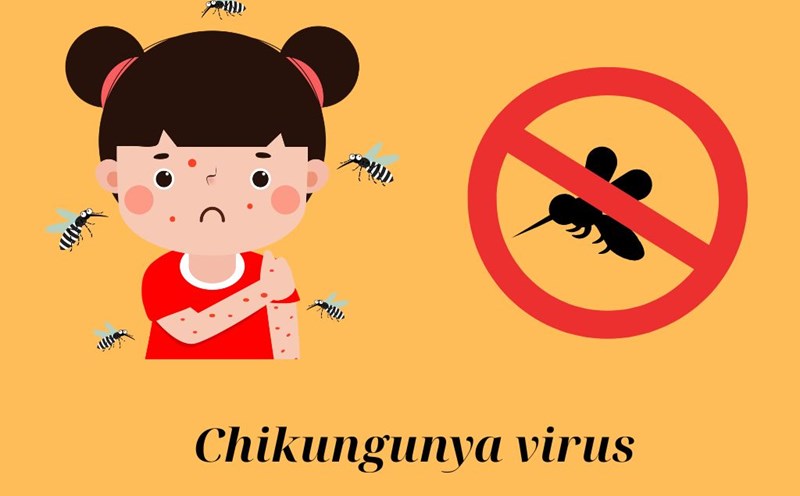According to the Department of Prevention, Ministry of Health, the symptoms of Chikungunya are similar to dengue fever, but the signs of pain and swelling of joints are often more obvious, while dengue fever often has more signs of bleeding.
Chikungunya was first recorded in 1952; the disease is not transmitted directly from person to person but is transmitted through the bite of Aedes mosquito (a mosquito that transmit dengue fever).
Most symptoms usually go away on their own and last for 2 to 7 days, but can also last for weeks, affecting people's health.
Symptoms of Chikungunia appear 4 to 8 days (death anniversary from 2 to 12 days) after being stung by a mosquito. The disease is characterized by high fever, sudden start, often accompanied by severe joint pain.
Other common signs and symptoms include stiffness, arthritis, headaches, fatigue, and rashes. Symptoms are similar to dengue fever, but signs of pain and swelling in the joints are often more obvious, while dengue fever often has more signs of bleeding.
However, people should not arbitrarily diagnose and treat at home. When there are signs of suspected illness, you must immediately go to the nearest medical facility for timely consultation, examination and treatment.
According to a representative of the Department of Disease Prevention, Ministry of Health, the infectious disease monitoring system in our country has not recorded any reports of Chikungunya cases from localities.
However, Chikungunya is on the rise in some countries in the region, especially in China; Meanwhile, Aedes mosquitoes that transmit the disease have also been circulating in many localities in our country; therefore, there is a high risk of the epidemic entering our country through people entering the country to carry pathogens and spreading to the community.











